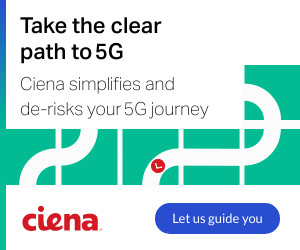Uncovering the path to 5G connectivity: part 2
This series covers some key strategies to accelerate and de-risk the path towards 5G, deliver new services, and stay ahead of your competitors. If you missed it, my first post covers more strategies on how to evolve your existing 4G infrastructure into a scalable, ultra-reliable, high-performance 5G network.
- Maximize service performance with more capacity at the network edge:
To cope with high-capacity 5G New Radios (NR) and to support ultra-reliable, low-latency 5G applications, performance at the network edge must be dramatically improved. Additionally, the shorter range of the 5G radio frequencies carrying most of the traffic means you’ll need to deploy a significant number of additional macro and small cells to address coverage gaps, increase capacity in high-use areas, etc. These new small cells will add 10x to 20x more IP-enabled nodes to the network, and thus require an IP network that’s open, automated, and lean. All this means that you need ‘right-sized’ infrastructure options for a wide range of 5G cell types, configurations, and supported use cases. These range from temperature-hardened platforms that can be located in street cabinets or on buildings close to subscriber populations, to larger, higher-capacity solutions that can support transport requirements at macro-cell sites. Coherent packet-optical technology in the access space solves the scalability and cost per bit challenges at the network edge – putting increased capacity and performance closer to where content is consumed.
All this means that you need ‘right-sized’ infrastructure options for a wide range of 5G cell types, configurations, and supported use cases. These range from temperature-hardened platforms that can be located in street cabinets or on buildings close to subscriber populations, to larger, higher-capacity solutions that can support transport requirements at macro-cell sites. Coherent packet-optical technology in the access space solves the scalability and cost per bit challenges at the network edge – putting increased capacity and performance closer to where content is consumed. - Deliver great user experiences with IP VPN-capable cell-site infrastructure:
You may just be looking to migrate macro cell sites to 5G today, but you’ll soon be adding a large number of additional small cell sites to extend your coverage or increase capacity in high-demand areas. To continue delivering great customer experiences in this complex environment, you must ensure that cells are totally synchronized, and that connections never drop, either when users approach the edge of a cell, or cross cell boundaries. The key technology for enabling this is IP VPN-based connectivity, which enables cells to synchronize with adjacent cells to ensure reliable connectivity for end-users, humans and machines, as they move around. By deploying this kind of technology in your network, you can continue delivering excellent customer SLAs as your macro and small-cell infrastructure grows. - Choose ‘high-density’ cell-site infrastructure to lower your total cost of ownership: Maximizing margins on 5G services depends on your ability to minimize ‘cost per bit’ transport costs between cell sites and data centres, where accessed content is hosted. This is achieved via modern, high-density solutions offering massive scalability in a small form-factor. By choosing compact, high-density platforms, you can reduce real estate costs as well as power, cooling, and ongoing maintenance costs. This is especially critical in the 10G equipment segment, which is likely to be the most commonly deployed solution to replace existing 1G-capable equipment situated at most modern 4G cell sites.
- Deploy ‘field-proven’ solutions that guarantee the success of your 4G to 5G evolution: Many equipment vendors are looking to maximize their share of the emerging 5G market. However, few have real-world experience in successfully delivering network evolution projects at scale. Ciena has delivered large-scale network upgrade projects for several leading tier-1 carriers around the world. Our massive installed base of programmable, scalable wireline network infrastructure gives us unrivalled credibility in the market.
- Get expert support for your 4G to 5G evolution journey:
Transitioning from 4G to 5G is a complex process with multiple technology requirements. It requires specialist resources and skills, from project management to equipment deployment, orchestration, and support. In most cases, it’s unrealistic to expect that you could deliver a transformation of this scale without external support. If this is the case for your business, you can dramatically reduce risk by choosing a transformation partner with the right skills, as well as real-world experience of delivering 5G-capable network infrastructure for multiple tier-1 network operators.
Preparing for the road ahead
5G infrastructure must accommodate enormous amounts of data that must be stored, accessed, and moved across the network. By deploying an open, scalable network that allows you to select best-in-breed products, you’ll ensure that your network will be prepared to scale and adapt to ever-changing market demands, while also enabling you to benefit from a lower total cost of ownership.
The third and final post in my series explores why Zero-Touch Provisioning (ZTP) is critical for delivering a fast, reliable 4G to 5G network transformation.









